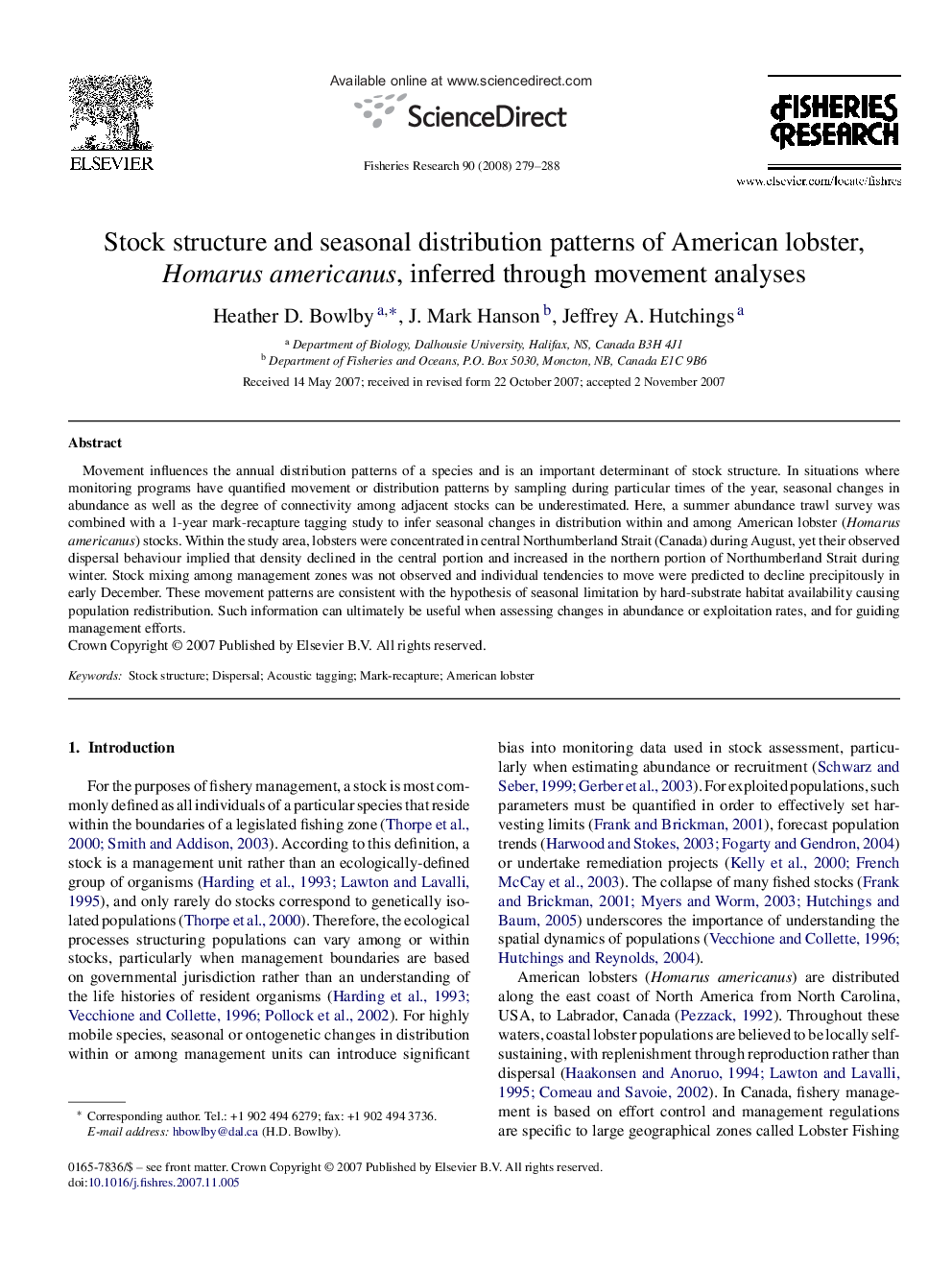| کد مقاله | کد نشریه | سال انتشار | مقاله انگلیسی | نسخه تمام متن |
|---|---|---|---|---|
| 4544452 | 1626861 | 2008 | 10 صفحه PDF | دانلود رایگان |

Movement influences the annual distribution patterns of a species and is an important determinant of stock structure. In situations where monitoring programs have quantified movement or distribution patterns by sampling during particular times of the year, seasonal changes in abundance as well as the degree of connectivity among adjacent stocks can be underestimated. Here, a summer abundance trawl survey was combined with a 1-year mark-recapture tagging study to infer seasonal changes in distribution within and among American lobster (Homarus americanus) stocks. Within the study area, lobsters were concentrated in central Northumberland Strait (Canada) during August, yet their observed dispersal behaviour implied that density declined in the central portion and increased in the northern portion of Northumberland Strait during winter. Stock mixing among management zones was not observed and individual tendencies to move were predicted to decline precipitously in early December. These movement patterns are consistent with the hypothesis of seasonal limitation by hard-substrate habitat availability causing population redistribution. Such information can ultimately be useful when assessing changes in abundance or exploitation rates, and for guiding management efforts.
Journal: Fisheries Research - Volume 90, Issues 1–3, April 2008, Pages 279–288